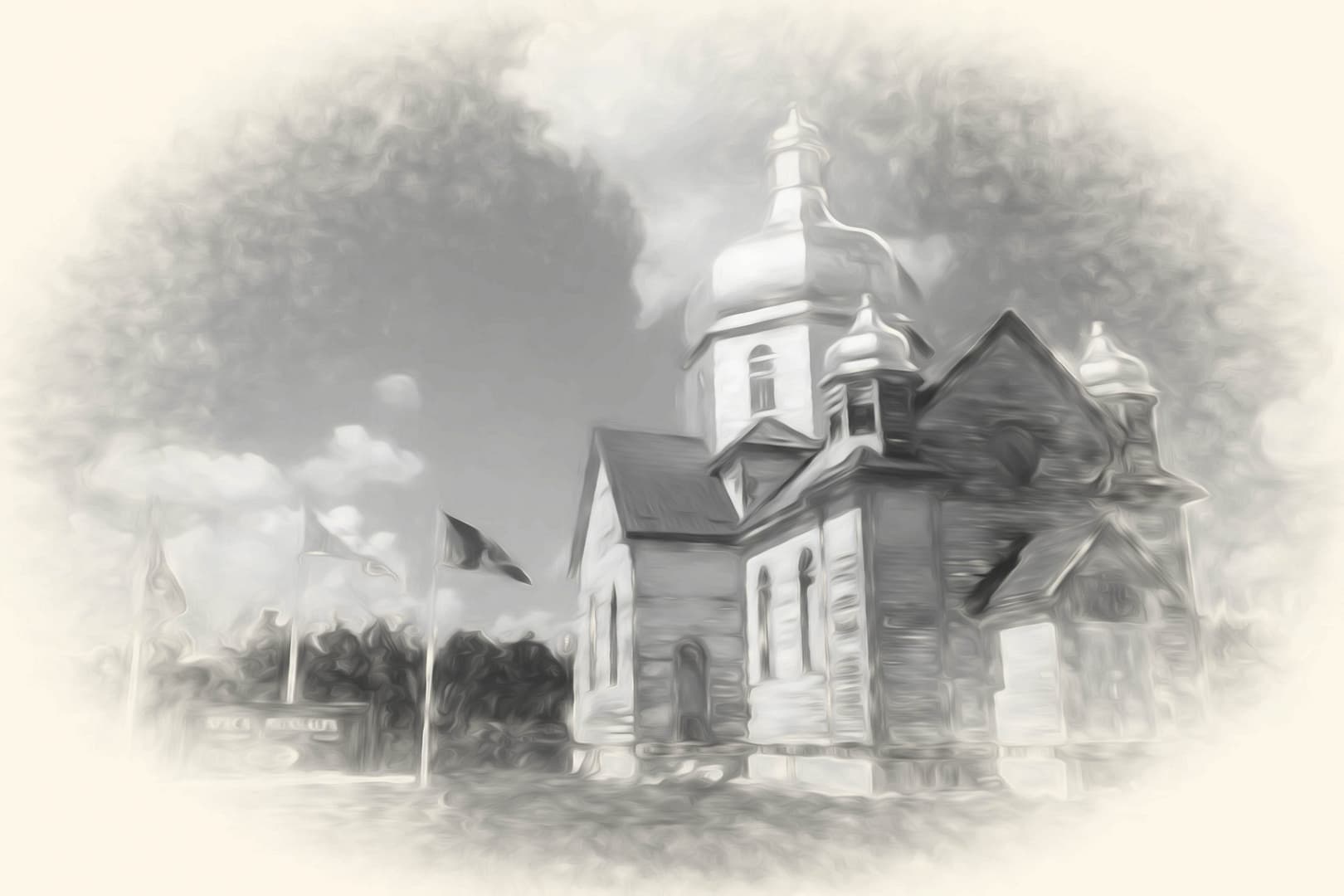“Spas Moskalyk”
When I arrived in early August, 2017 at the “Spas Moskalyk” church, a short name for “Transfiguration of Our Lord Ukrainian Catholic Church”, I was greeted with a “No Trespassing” sign and padlocked gates. “Hmm, that’s different for a rural church”, I thought to myself.
The church exterior is in a very “weathered” state with paint peeled to bare boards and the space under the church is open, revealing cans, pails and material that looks like trash.
Not knowing any better, I thought that the structure was in such bad shape that the grounds were closed off for public safety.
But after a little more research when I returned home, I found out my assumption was completely wrong; in fact, this church in the midst of a slow process of re-birth or, borrowing from the official name of the church itself, a transfiguration.
First some history. Early settlers in the area built a small chapel here in 1904, but this burned to the ground while the present church was being built in 1924. The belfry beside the church was constructed in 1938.
For the past number of years the church has been used only for annual services.
But the church gradually must have fallen into disrepair and “In 2013, an engineering report stated the foundation was unstable and it could cost up to $400,000 to repair it.” (Source)
In 2013, a meeting was held to decide on the church’s fate and instead of proceeding with a controlled burn of the building, with the local funding raising and the help of local businesses, it was decided save the structure and move the church to a new foundation. That’s what I was seeing today: the result of a move that was completed in December, 2016.
And as I was researching the church, I found some evidence on my own computer: photos I’d taken of the church back in 2008 show that I’d been here before to find a geocache. One photo shows the church in its original spot with the belfry close by. So really, I should have been able to recognize the church had been moved, but the memory of a previous visit had already faded away.

At first glance, the money, time and energy being spent now to save a structure that will be very rarely used as a church and seldom used by the community doesn’t make practical sense. But, there’s another, stronger urge at play here. No different from my forgetting, the local population recognizes that simply letting the church disintegrate to nothing means the memory of the church and its place in the lives of their ancestors will simply fade away as well.
This church provided a place that helped give their forebears some sense meaning during their lives. In fact, many of those people are buried in the adjoining cemetery. In a sense, erasing the building is the beginning of the erasing of all memory of their existence.
In the long run, erasure is inevitable. Make no mistake about that. But the will to fight against it is part of what makes us alive. So I can’t help but think the core meaning of a Dylan Thomas poem infuses the community’s current transfiguration of the church building:
Do not go gentle into that good night, …
-Dylan Thomas
Rage, rage against the dying of the light.
Photos








Sources
“Lamont County’s Self-Guided Church Tours” booklet. Available online .
CBC News stories:







